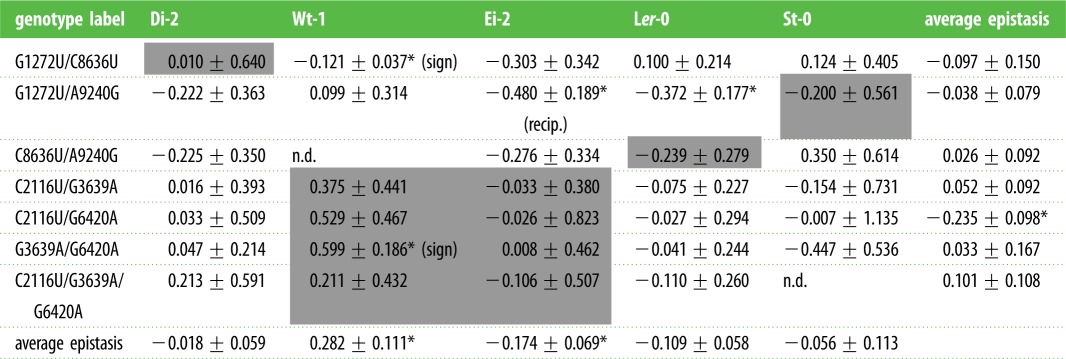Table 4.
Epistasis coefficients (±1 s.d.) evaluated for all double and triple mutants shown in figure 2. Significant cases are indicated with asterisks (z-test; FDR correction for multiple tests). Shadowed cells indicate the local host in which the mutation was detected. Sign epistasis refers to cases in which the sign of the fitness effect depends on the genetic background. Reciprocal (recip.) sign epistasis means that the sign of the fitness effect of a mutation is conditional upon the state of another locus and vice versa. Last row shows the significance test for the average epistasis (±1 s.e.m.) among genotypes and the last column shows the significance test for average epistasis among hosts (t-test).
 |
